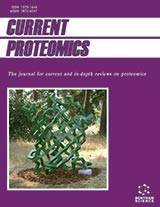Abstract
Background: Proteins participate in various essential processes of life and hence accurately annotating functional roles of proteins can elucidate the understanding of life and diseases.
Objective: Various network-based function prediction models have been proposed to predict protein functions using protein-protein interactions networks, while most of them do not make use of function correlations in functional inference. Furthermore, these models suffer from false positive interactions. Our aim is to solve these problems with advanced machine learning techniques.
Method: In this paper, we introduce an approach called protein function prediction by random walks on a hybrid graph (ProHG). ProHG not only takes into account of the function correlation and direct interactions, but also indirect interactions between proteins by functional similarity weight (FS-weight) to alleviate noisy interactions.
Results: Experiments on three public accessible PPI networks show that ProHG can take advantage of function correlations and indirect interactions between proteins for function predictions, and it achieves better performance than other related approaches.
Conclusion: The extensive empirical study demonstrates that our proposed ProHG is superior to other related methods for function prediction in most cases, and using indirect interactions can boost the performance of network-based function prediction.
Keywords: Protein function prediction, hybrid graph, function correlations, PPI network.
Graphical Abstract
Current Proteomics
Title:Protein Function Prediction by Random Walks on a Hybrid Graph
Volume: 13 Issue: 2
Author(s): Jie Liu, Jun Wang and Guoxian Yu
Affiliation:
Keywords: Protein function prediction, hybrid graph, function correlations, PPI network.
Abstract: Background: Proteins participate in various essential processes of life and hence accurately annotating functional roles of proteins can elucidate the understanding of life and diseases.
Objective: Various network-based function prediction models have been proposed to predict protein functions using protein-protein interactions networks, while most of them do not make use of function correlations in functional inference. Furthermore, these models suffer from false positive interactions. Our aim is to solve these problems with advanced machine learning techniques.
Method: In this paper, we introduce an approach called protein function prediction by random walks on a hybrid graph (ProHG). ProHG not only takes into account of the function correlation and direct interactions, but also indirect interactions between proteins by functional similarity weight (FS-weight) to alleviate noisy interactions.
Results: Experiments on three public accessible PPI networks show that ProHG can take advantage of function correlations and indirect interactions between proteins for function predictions, and it achieves better performance than other related approaches.
Conclusion: The extensive empirical study demonstrates that our proposed ProHG is superior to other related methods for function prediction in most cases, and using indirect interactions can boost the performance of network-based function prediction.
Export Options
About this article
Cite this article as:
Liu Jie, Wang Jun and Yu Guoxian, Protein Function Prediction by Random Walks on a Hybrid Graph, Current Proteomics 2016; 13 (2) . https://dx.doi.org/10.2174/157016461302160514004307
| DOI https://dx.doi.org/10.2174/157016461302160514004307 |
Print ISSN 1570-1646 |
| Publisher Name Bentham Science Publisher |
Online ISSN 1875-6247 |
 23
23 1
1 1
1
- Author Guidelines
- Bentham Author Support Services (BASS)
- Graphical Abstracts
- Fabricating and Stating False Information
- Research Misconduct
- Post Publication Discussions and Corrections
- Publishing Ethics and Rectitude
- Increase Visibility of Your Article
- Archiving Policies
- Peer Review Workflow
- Order Your Article Before Print
- Promote Your Article
- Manuscript Transfer Facility
- Editorial Policies
- Allegations from Whistleblowers
Related Articles
-
The Identification, Characterization and Optimization of Small Molecule Probes of Cysteine Proteases: Experiences of the Penn Center for Molecular Discovery with Cathepsin B and Cathepsin L
Current Topics in Medicinal Chemistry 5-HT7 Receptors
Current Drug Targets - CNS & Neurological Disorders Double-Blind, Controlled Phase II Study of a 5-HT6 Receptor Antagonist, SB-742457, in Alzheimers Disease
Current Alzheimer Research The APOE Genotype: Modification of Therapeutic Responses in Alzheimer's Disease
Current Pharmaceutical Design Neurodegeneration in Amygdala Precedes Hippocampus in the APPswe/ PS1dE9 Mouse Model of Alzheimer’s Disease
Current Alzheimer Research NMDA Receptors in Glial Cells: Pending Questions
Current Neuropharmacology Discovery of Small Molecules that Target Autophagy for Cancer Treatment
Current Medicinal Chemistry Obstructive Sleep Apnea in Chronic Obstructive Pulmonary Disease: The Overlap Syndrome
Current Respiratory Medicine Reviews Hypothalamic AMP-activated Protein Kinase as a Regulator of Food Intake and Energy Balance
CNS & Neurological Disorders - Drug Targets Anxiety: A Systematic Review of Neurobiology, Traditional Pharmaceuticals and Novel Alternatives from Medicinal Plants
CNS & Neurological Disorders - Drug Targets Anti-Cytokine Therapeutics: History and Update
Current Pharmaceutical Design MICA Molecules in Disease and Transplantation, a Double-Edged Sword?
Current Immunology Reviews (Discontinued) Targeting Kinin Receptors for the Treatment of Neurological Diseases
Current Pharmaceutical Design A Novel Cell-based β-secretase Enzymatic Assay for Alzheimer’s Disease
Current Alzheimer Research The Macrophage Stimulating Protein/Ron Pathway as a Potential Therapeutic Target to Impede Multiple Mechanisms Involved in Breast Cancer Progression
Current Drug Targets Desogestrel and Severe Psychiatric Disorders: A Retrospective Analysis of Federal Adverse Event Reporting System and EudraVigilance
Current Drug Safety Beneficial and Adverse Effects of Molecularly Targeted Therapies for Acute Promyelocytic Leukemia in Central Nervous System
CNS & Neurological Disorders - Drug Targets Immune Response to Herpes Simplex Virus and γ134.5 Deleted HSV Vectors
Current Gene Therapy Hippocampal Morphology and Autobiographic Memory in Mild Cognitive Impairment and Alzheimer’s Disease
Current Alzheimer Research Transcriptional Dysregulation: A Therapeutic Target for Polyglutamine Diseases
Current Medicinal Chemistry - Central Nervous System Agents























